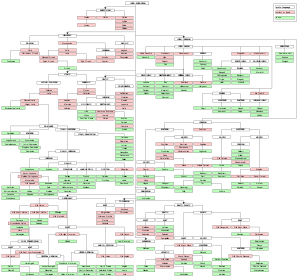Linguas indoeuropee
| Linguas indoeuropee | |
|---|---|
| instantia de: | familia linguistic |
| subclasse de: | human language[*] |

| |
| Personas: | 3 320 000 000 |
| Phylogenese: |
|
| Statuto official | |
| Codices de position | |
| ISO 639-2 | ine |
| Glottolog | indo1319 |
| LinguistList | ieur |
| IETF ID | ine |

| |
| Commons: | Indo-European languages |
| categoria principal: | Categoria:Linguas indoeuropee |
Le linguas indoeuropee es un major gruppo linguistic, de linguas relate. Le linguas es traditionalmente parlate in Europa, India, Russia e le altiplano irane, e per le colonisation in America del Nord e Sud, Australia e partes de Africa. Secundo Ethnologue, 46% del population mundial parla un lingua indoeuropee, securmente le plus grande de un gruppo de linguas relate.
Le linguas es descendentes del lingua proto-indoeuropee, que se diffundeva a Europa e alcun partes de Asia. Secundo le hypothesis le plus popular, le hypothesis kurgan, illo veniva del Steppa pontic, nunc in Russia del sud-west e Ukraina del est. Le proto-lingua se divideva in multe sub-gruppos. Le prime linguas indoeuropee que esseva registrate con scriptura include greco ancian, hitita, luvita, latin e perse antique; sanscrito antique esseva conservate in transmission oral. Le gruppos currente include le linguas indoiranian, romanic, germanic, slave e celtic.
Ethnologue registra 445 linguas, inclusive 313 del gruppo indoiranian. Su linguas le plus parlate es espaniol, anglese, hindustani (hindi et urdu), portugese, bengali, russo e panjabi, que es le linguas materne de plus que 100 million personas. Anglese, espaniol, francese e russo esseva quatro del sex linguas official del Nationes Unite. Multe altere linguas indoeuropee ha un parve numero de parlatores, e alcun es menaciate.
Le concepto esseva disveloppate per linguistas post visitantes europee a India in le seculos 16 e 17 notava similaritates inter sanscrito, latin e greco ancian. Popularisate in 1786, le theoria esseva meliorate durante le seculo 19 con le discoperta de linguas altere como hitita. Al medio del seculo 20, Marija Gimbutas disveloppava le hypothesis plus influential del origine, que ha essite suggerite le seculo 19. Il ha propositiones pro includer plus gruppos de linguas, ma necuno de illos ha essite acceptate.
Referentias
[modificar | modificar fonte]- (anglese) Robert S. P. Beekes: Comparative Indo-European Linguistics. An Introduction. Benjamins, Amsterdam 1995, ISBN 1-55619-505-2
- (germano) Michael Meier-Brügger, Hans Krahe: Indogermanische Sprachwissenschaft. Walter de Gruyter, Berlin 2002 (8. Aufl.), ISBN 3-11-017243-7
- (germano) Warren Cowgill: Indogermanische Grammatik. Bd I: Einleitung; Bd II: Lautlehre. Begr. v. Jerzy Kuryłowicz, hrsg. v. Manfred Mayrhofer. Indogermanische Bibliothek, Reihe 1, Lehr- und Handbücher. Winter, Heidelberg 1986.
- (germano) Linus Brunner: "Die gemeinsamen Wurzeln des semitischen und indogermanischen Wortschatzes - Versuch einer Etymologie". Francke, Bern, München, 1969.
- (germano) Luigi Luca Cavalli-Sforza, Gene, Völker und Sprachen. Die biologischen Grundlagen unserer Zivilisation. dtv, München 2001, ISBN 3-423-33061-9
- (germano) Marcelo Jolkesky: Uralisches Substrat im Deutsch – oder gibt es eigentlich die indo-uralische Sprachfamilie? UFSC 2004. Archived 2011-08-06 at the Wayback Machine
- (anglese) John V. Day, Indo-European origins. The anthropological evidence. The Institute for the Study of Man, Washington DC 2001, ISBN 0-941694-75-5
- (anglese) Marija Gimbutas: The Kurgan Culture and the Indo-Europeanization of Europe. Selected Articles from 1952 to 1993. Institute for the Study of Man, Washington 1997, ISBN 0-941694-56-9
- (anglese) James P. Mallory, In Search of the Indo-Europeans. Language, Archaeology and Myth. Thames & Hudson, London 1991, ISBN 0-500-27616-1
- (anglese) James P. Mallory, D. Q. Adams (Hrsg.): Encyclopedia of Indo-European Culture. Fitzroy Dearborn, London 1997, ISBN 1-884964-98-2
- (germano) Colin Renfrew, Die Indoeuropäer - aus archäologischer Sicht. in: Spektrum der Wissenschaft. Dossier. Die Evolution der Sprachen. Spektrumverlag, Heidelberg 2000,1, S. 40-48. ISSN 0947-7934
- (anglese) Colin Renfrew, Archaeology and Language. The Puzzle of Indo-European Origins, University Press, Cambridge 1995, ISBN 0-521-38675-6
- (germano) Reinhard Schmoeckel, Die Indoeuropäer. Bastei Lübbe, Bergisch Gladbach, 1999, ISBN 3-404-64162-0
- (germano) Elmar Seebold, "Versuch über die Herkunft der indogermanischen Verbalendungssysteme", dans Zeitschrift für vgl. Sprachforschung 85-2:185-210.
- (germano) Oswald Szemerényi, Einführung in die vergleichende Sprachwissenschaft. Wissenschaftliche Buchgesellschaft, Darmstadt 1990 (4. Aufl.), ISBN 3-534-04216-6.
- (germano) Eva Tichy: Indogermanistisches Grundwissen. Hempen, Bremen 2000, ISBN 3-934106-14-5.
In francese
[modificar | modificar fonte]- Émile Benveniste, Le Vocabulaire des institutions indo-européennes 1 et 2, 1969, Paris, Minuit.
- Franz Bopp, Grammaire comparée des langues indo-européennes , traduction de Michel Bréal de l'École pratique des hautes études et du Collège de France (de 1866 à 1905), membre de l'Académie des inscriptions et belles-lettres, quatre tomes in-quarto, Paris, Imprimerie impériale et Imprimerie nationale, 1866-1874
- Roland Breton, Atlas des langues du monde, Éditions Autrement, Collection Atlas/Monde, Paris, 2003
- Xavier Delamarre, Le vocabulaire indo-européen, Lexique étymologique thématique, Librairie d'Amérique et d'Orient, Jean Maisonneuve, 1984
- Jean Haudry, L'Indo-européen, Paris, PUF, « Que sais-je ? », 1979 ; rééd. 1984 ; 1994. ISBN 2-13-036163-3
- André Martinet, Des steppes aux océans, Paris, Payot, 1986.
- Georges-Jean Pinault, La langue poétique indo-européenne - actes du colloque de travail de la Société des Études Indo-Européennes, Leuven, Peeters , 2006 , ISBN 90-429-1781-4.
